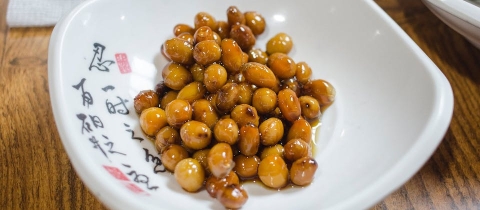The origin of COVID-19 (SARS-Cov2) has been the subject of intense academic discussion. Unfortunately, some theories would make for an intriguing Hollywood production but are based more on rumour than fact. Luckily, technology has helped to keep these rumors at bay: for some time now, we have been able to compare organisms at the molecular level and use this information to establish whether one may have derived from the other.
The molecule relevant to this discussion is the nucleic acid, or genetic material of the virus, which is basically like a string of beads, with only 4 colors of beads strung in different combinations. Scientists are able to identify each of these beads and come up with a sequence of colours. Every time there is a change or a mutation, one or more beads get switched around, removed or additional beads get inserted.
Armed with this technology scientists have been studying coronaviruses for many years now. SAR-Cov2 is a new member of this well-known family. When the sequence of SARS-Cov2 became available it was relatively easy to compare it to that of other coronaviruses. The sequence similarity with SARS (SARS-Cov1) and MERS was evident, as was the similarity with the bat virus and one region of the pangolin virus. Interestingly, the region that pangolin virus shares with COVID 19 is the region that enables the virus to enter a human cell. This is one of the sequences that are different in the bat virus. Therefore, at present, the hypothesis that is consistent with available data is that the bat and pangolin viruses found themselves in close enough proximity to exchange partial sequences. The hybrid virus that emerged was primarily a bat virus but had acquired sequences from the pangolin virus that allowed it to infect human cells. The act of exchanging genetic material is common and is a strategy used by several organisms to re-invent themselves, acquire new traits, or lose unwanted attributes.
What is striking in the mention of bats, is that they have been implicated in the origin of several other deadly zoonotic (transmitted to humans from animals) viruses such as SARS, MERS, and Ebola. What is it with the bats? Why are bats able to host these viruses as long-term persistent infections without suffering any ill consequences? A timely publication from Brooke and colleagues (eLife 2020;9: e48401) starts to unravel this mystery.
The first clue comes from the fact that bats are the only flying mammals and flight uses an enormous amount of energy. Energy generation or metabolism needs to be increased 15-fold, compared to a 2-3-fold increase for most terrestrial activities. It is generally an accepted fact that, in the process of generating energy, our cells produce certain harmful substances, or metabolic by-products, which cause cellular damage. The pain in the muscles after strenuous exercise is a manifestation of such damage, but the transient nature of the discomfort is evidence of the continuous healing by removal of the damaging agents and damaged cells. In the case of bats, however, the high amount of energy required to fly, results in the generation of substantially higher amounts of metabolic by-products, making their removal challenging.
Surprisingly, there is no evidence of increased cell damage in bats. Indeed, bats enjoy higher longevity than expected on the basis of their size, suggesting lower levels of damage. Research from several groups have demonstrated that bats have developed a heightened ability to reduce cell damage. This has been attributed to the continuous presence of a signaling molecule, interferon alpha, which is a molecule that is normally produced by a cell that is infected by a virus, as a cry for help. The immune system responds to the cry by triggering a series of activities to combat the infection, notably activities that minimize cell damage. At the same time, the danger signal also initiates the next phase of the body’s response to infection that includes the killing of cells infected with viruses. These actions, if left unchecked, can cause damage not just to the virus-infected cells, but also to normal tissue.
Both viruses and bat cells have worked in concert to minimize these harmful effects. Viruses have accumulated many tools to hide from elements of the immune system. Bat cells, for their part, have lost some of the cell-killing mechanisms triggered by the immune response. The combined effect of these changes both in viruses and in bat cells has meant that there is minimal cellular damage and the viruses can cause a persistent low-level infection rather than a transient spike in viral replication that is characterized by a strong immune response.
In other words, a virus living in a bat cell is under continuous pressure to survive in an antiviral state and is therefore continuously evolving strategies to survive. Quoting the author “bat immune defenses may drive the evolution of faster transmitting viruses, and while bats are well protected from the harmful effects of their own prolific viruses, other creatures like humans are not”. Therefore, when they leave a bat cell and infect, for instance, a human cell, the viruses have a distinct advantage. Natural selection is playing out before our very own eyes and however devastating the pandemic has been, it is difficult not to marvel at nature at work.
Dr. Alaka Mullick is a cell physiologist at the National Research Council.







